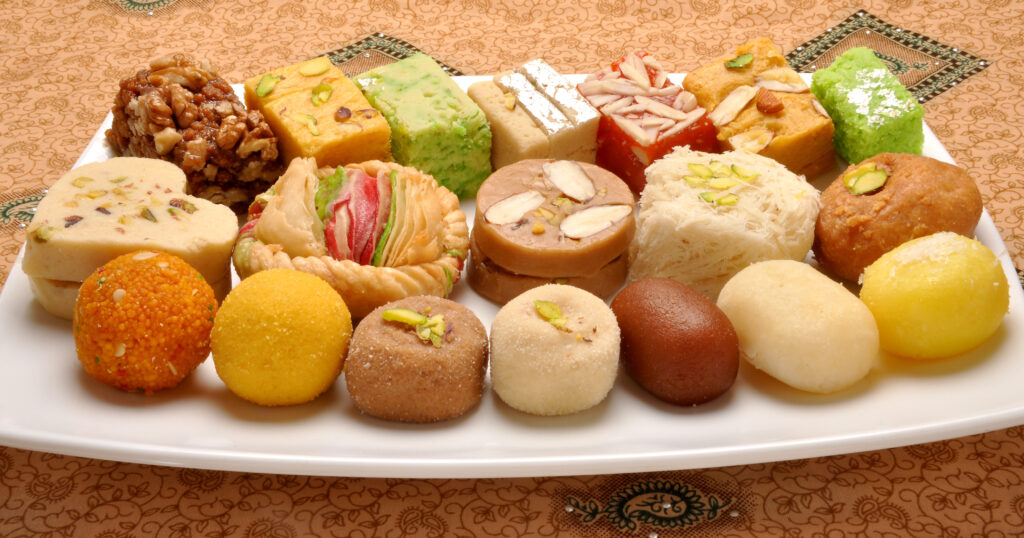
Pakistani Mithai – An Irreplaceable Delicacy
Although most of us can easily name our favorite Mithai, we are not quite sure how many types of Mithai are there in total. Or which ones are the most popular in the perimeters of Pakistan? Or if this after-meal sweet has a rich history to enlighten us? Let’s not waste a moment more, and unravel the sweet truth of this delicacy.
Origin of Mithai
In the1500s, the cooks at the time of Mughal Era discovered a new way to please their royal highness-a combination of different ingredients to produce one ultimate sweet dish called Mithai. The Mughals were known for their passion for food and arts. Hence, the cooks saw the creation of Mithai as an opportunity.
Presenting the majestic Maharaja with a serving of Laddus, these cooks not merely won the hearts of their authorities but unintentionally influenced the culture of the upcoming Asian countries.
The new variation of sweets influenced the royal delicacy to such an extent that for over 300-years the dish got considered only worthy of the royal’s taste. After a long time, the secret of the royal menu-Mithai broke out from the regimes of the castle and made its way into the hearts of the local population. Thus, weaving its path into the Indian and Pakistani culture.
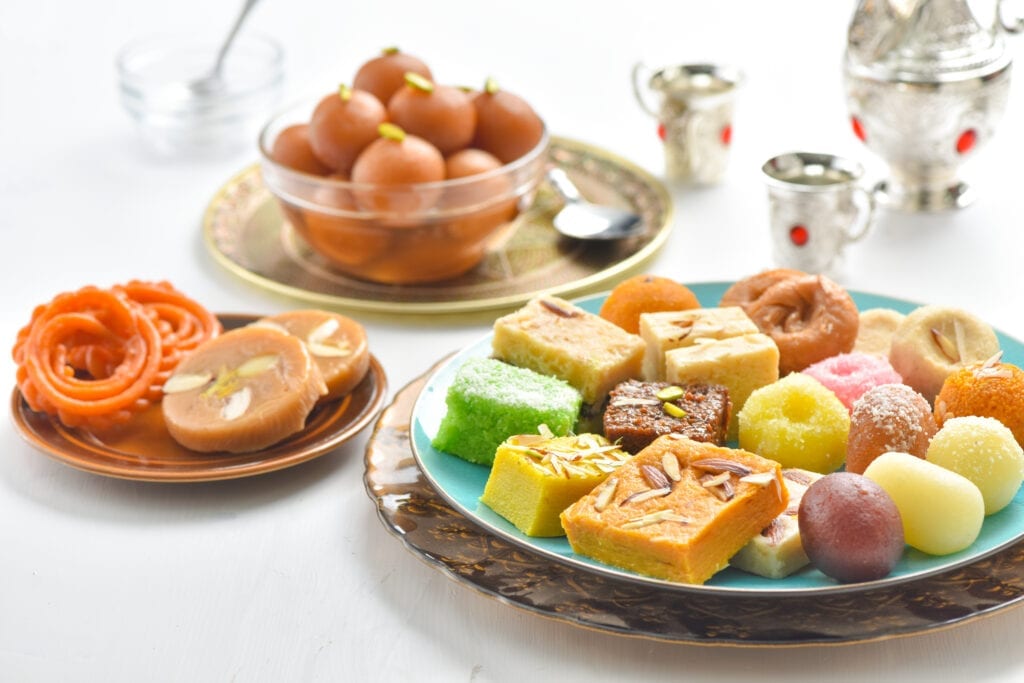
The Glory of Pakistani Events
Whether it be a child’s birth, someone’s graduation, the start of a new job, or a wedding ceremony, each event gets celebrated enthusiastically in Pakistan. The elders double the joy of every occasion by sharing Mithai boxes and baskets. It appears as if the Mithai walks us through the various stages of life. Of course, who doesn’t love piling scrumptious and overwhelmingly sweet Gulab Jamun or juicy Jalebi in their mouth? The sweetness in the mouth, coupled with the glee of the event, adds in real charm and glory to the Pakistani occasions!
The Popular Ones
With the Pakistani culture so dense in Mithai variations, we often confuse one type with another. Startling, isn’t it? But, it is mere truth. Question yourself, how many Mithai types were you able to name or recognize when you last entered a sweet shop or attended a wedding? For a majority, the answer will not go above three!
1. Barfi
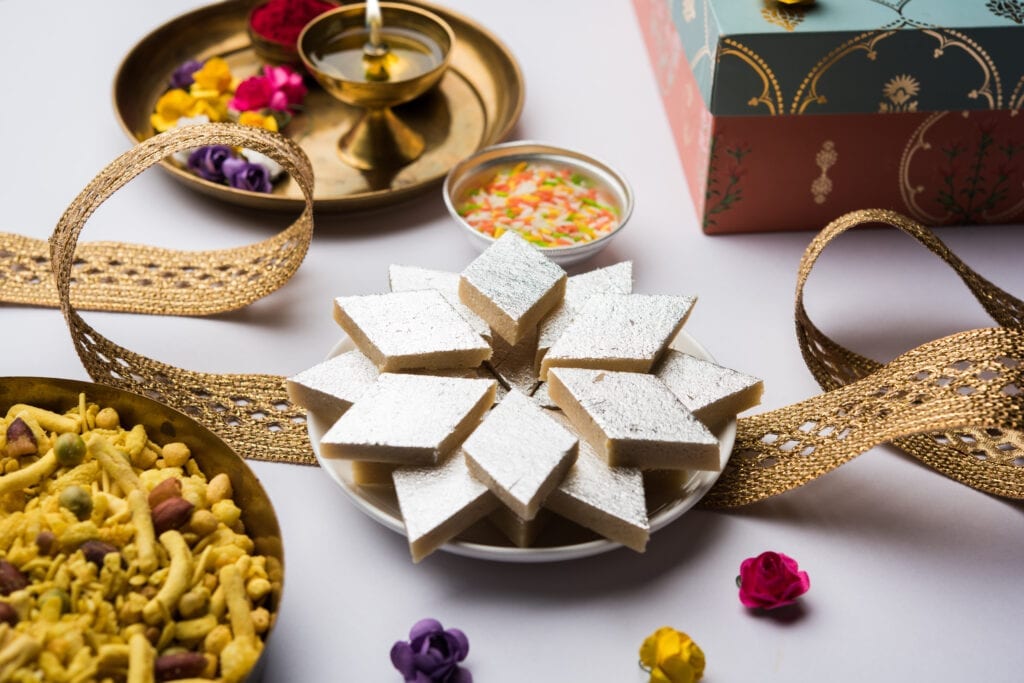
Perhaps, Barfi is one of the most ancient types of Pakistani Mithai. Meaning snowy, the Barfi first originated in Persia and gradually made its way into Peshawar. The sweet juicy Barfi has further variations now, including coconut Barfi, Badam Barfi, and Kaju Barfi.
2. Gulab Jamun
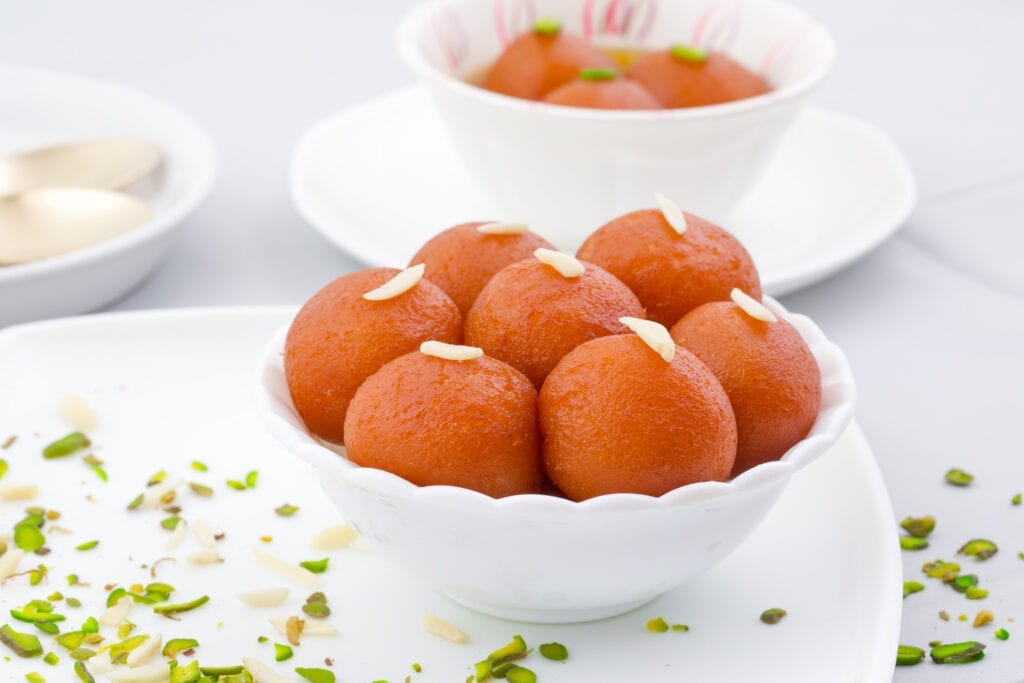
The luscious and velvety Gulab Jamuns resemble the Arabic Luqmat al qadi, Turkish Tulumba, and even the Persian Bamieh. Some say that the legendary, dark-brown Gulab Jamuns were first prepared by Shah Jahan royal chef who was greatly inspired by the Turkish Halwai’s, while others claim that a local accidentally gave birth to this wonder, in attempts of pleasing a viceroy’s wife.
Regardless of its origin, this particular Mithai has won the hearts of millions. Celebrations of all sorts remain incomplete without these small, deep-friend fluffy dough balls. To amplify the pleasure offered by these rose-scented round sweets, they are dipped in sugar syrup and served warm.
3. Laddu
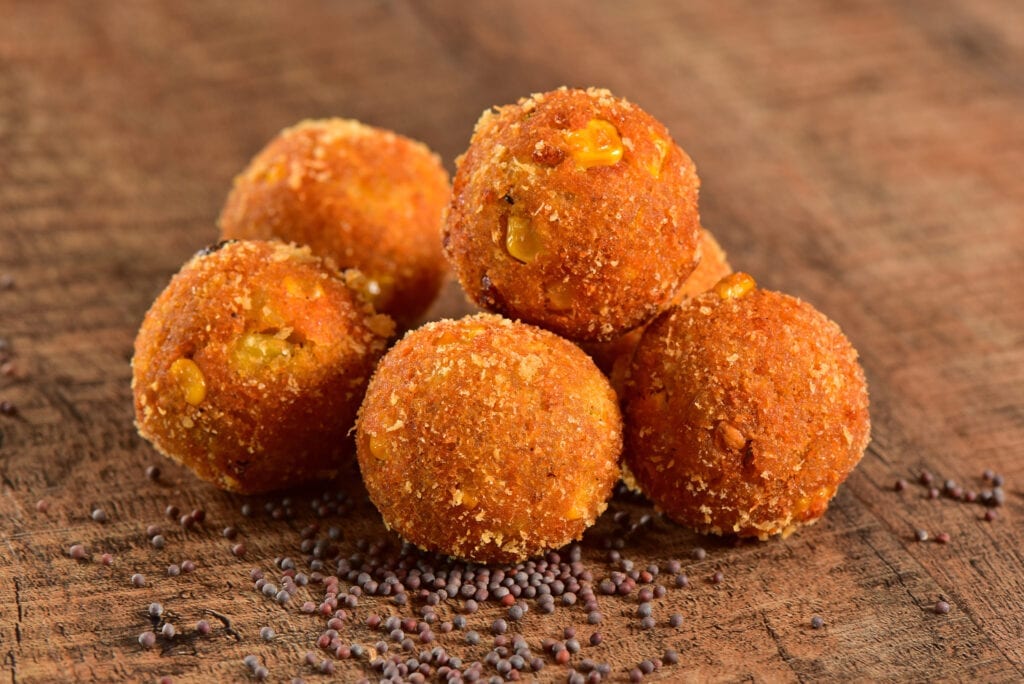
Laddu- An intricate sweetened delicacy. The term ‘Intricacy’ happens to have associated itself with the spherical-shaped Mithai, owing to its complex making, and multiple variants. Only a seasoned and skilled chef can combine the fundamental ingredients (namely flour, sugar, and oil) meticulously enough to make the perfect Laddu.
Moreover, there are about more than thirty different variants of these mouth-watering, golden-yellow, rounded sweets. These include Besan laddu, Motichoor laddu, Kava coconut laddu, Shahi dates nut laddu, Dry fruits laddu, etc.
4. BaluShahi
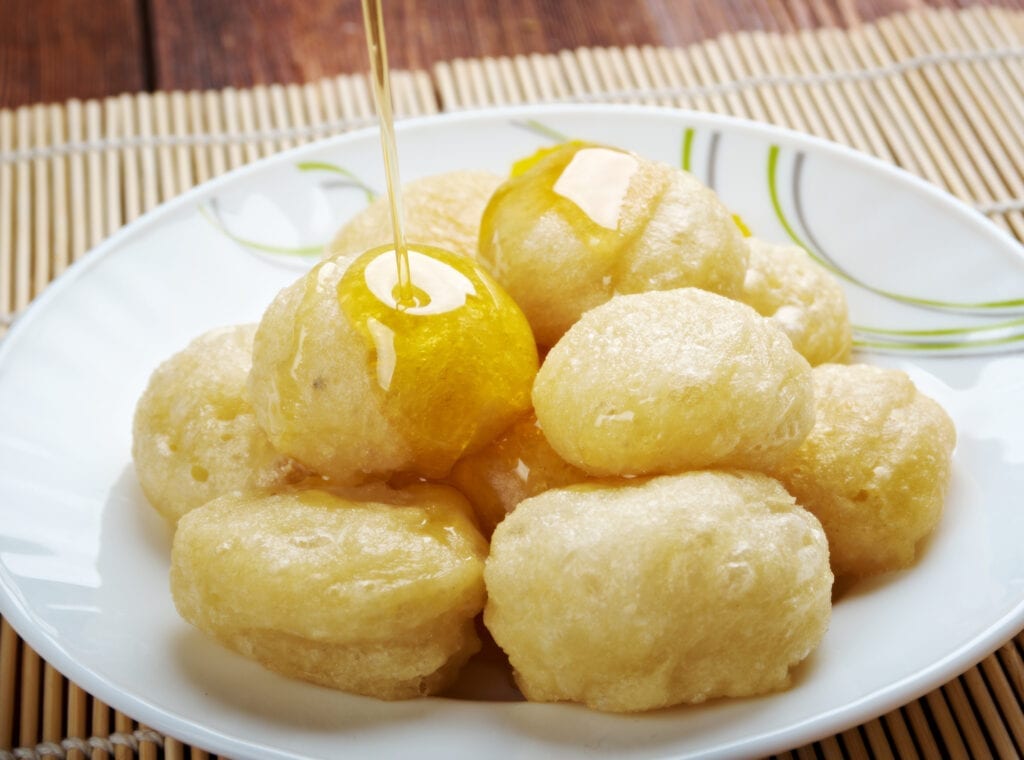
Known as the miniature desi glazed doughnut, BaluShahi is made from ghee, sugar, and maida flour. Previously, Halwai’s preferred using wheat flour to prepare this royal treat. The sweet happens to be immensely popular amongst masses due to its longer shelf life as compared to the other sweets. You can easily prepare the BaluShahi’s 2-3 days before an event and store them in the refrigerator. On the big day, the crispy, honey-brown BaluShahi will be as sweet and crisp as the ones freshly fried.
5. Chum Chum
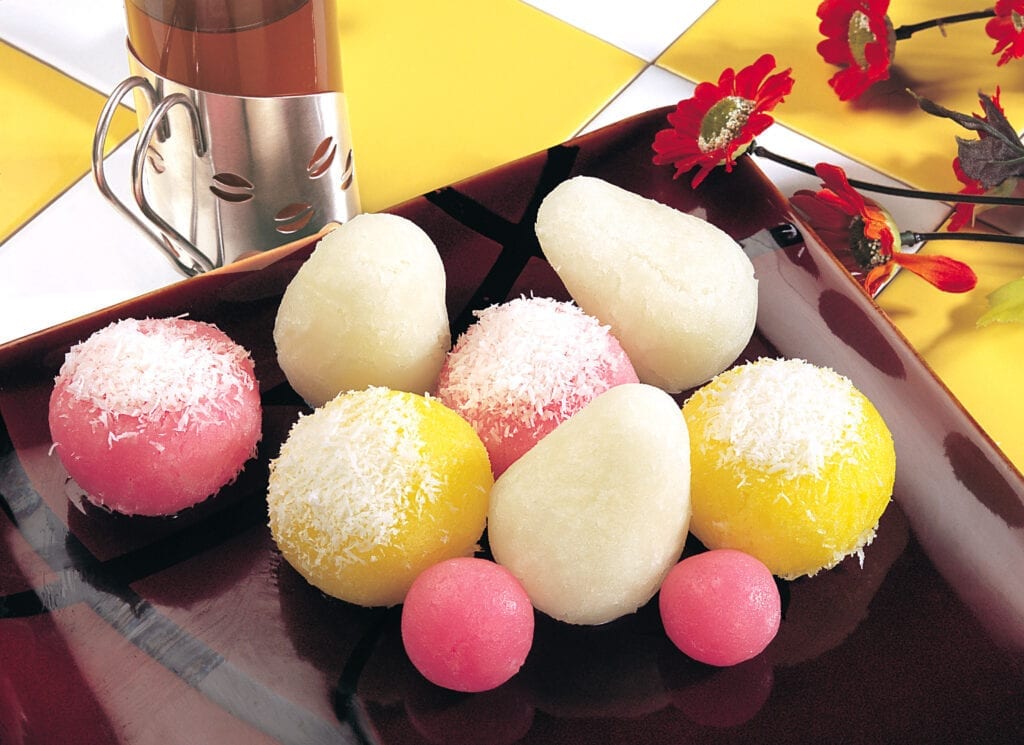
The Bengali Chum Chum remarkably resembles the Ghulab Jamun in terms of taste and flavor. However, instead of being brown, it has a brilliant white color. The sweet is compared to snow too, and people often describe it as melting in the mouth as a snowflake would. It is also available in light pink or light yellow color. The main ingredient remains milk, sugar, and some coconut for garnishing (optional). Thus, the Chum Chum provides a milky yet sugary taste.
Conclusion
Perhaps, it wouldn’t be wrong to claim that the Mithai variations are a blessing to Pakistani culture. The sweetness of this food type does not depict mere culture but a culture of joy and happiness. When people come together to relish the flavorful Mithai types, they share a common feeling of glee that brings them closer. So, the next time you start to dig in various types of Pakistani Mithai boxes, pause for a minute, and upon its sugary contribution to our heritage.
mahin-alvi
Great review, Most people don’t even know the origin of these sweets so i find this review rather informative.